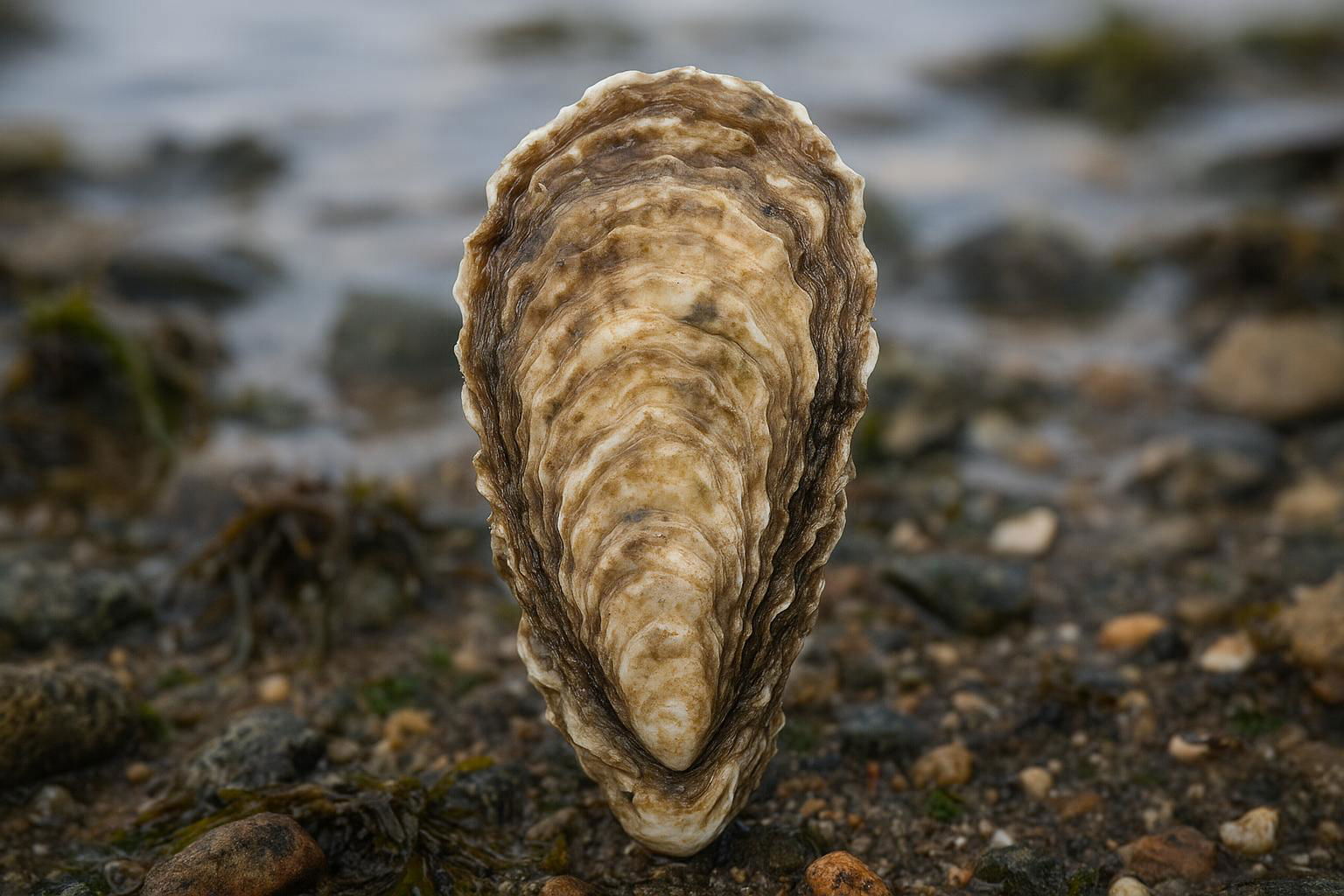
Pacific Oyster
Crassostrea gigas
The Pacific Oyster, scientifically known as Crassostrea gigas, is a prominent marine bivalve mollusk recognized for its ecological significance and economic value in aquaculture worldwide. Native to the Pacific coast of Asia, this oyster species has been introduced and cultivated in various parts of the world, including North America and Europe, due to its adaptability and rapid growth rate. Adult Pacific Oysters possess a rough, fluted shell with a distinct oval shape, typically measuring between 8 to 15 centimeters. The outer shell is usually gray to white, while the inner surface shines with a pearlescent sheen.
Pacific Oysters are filter feeders, playing a crucial role in maintaining water quality by filtering plankton and organic particles from their environment. They thrive in estuarine environments with salinity levels ranging between 20 to 30 parts per thousand and prefer temperatures from 8°C to 24°C. This species exhibits a remarkable resilience to varying environmental conditions, including changes in water temperature and salinity, which contributes to its widespread distribution.
Reproductively, Pacific Oysters are protandric hermaphrodites, meaning they can change sex from male to female as they age, a trait that ensures successful reproduction. Spawning occurs when water temperatures rise, releasing millions of eggs and sperm into the water column. Beyond their ecological role, Pacific Oysters are a culinary delicacy, renowned for their briny, slightly sweet flavor and firm texture, making them a staple in seafood diets around the globe.

 All Species & Breeds
All Species & Breeds
 Highland Cattle
Highland Cattle
 Miniature Donkeys
Miniature Donkeys
 All Species Directory
All Species Directory
 Highland Cattle in Virginia
Highland Cattle in Virginia
 Miniature Donkeys in Texas
Miniature Donkeys in Texas












